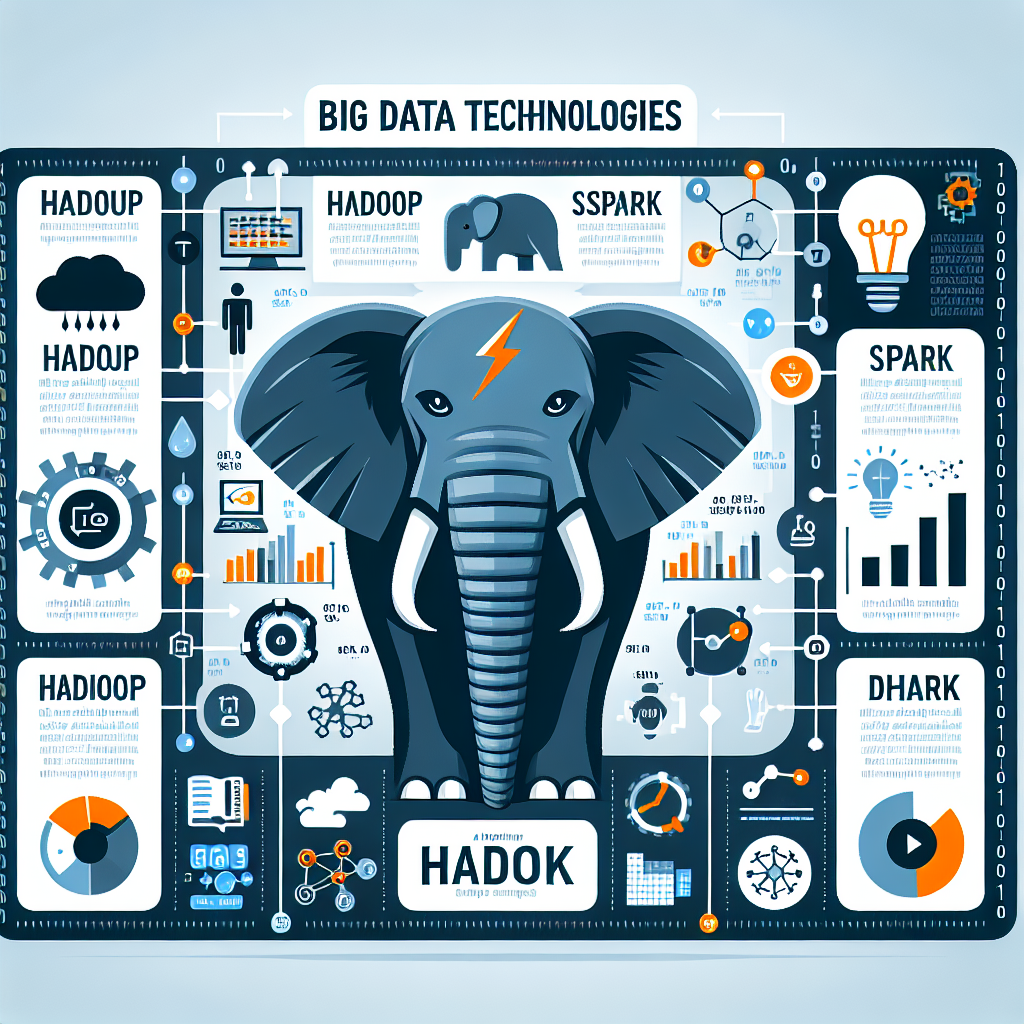Discover the power of big data technologies with this comprehensive overview of Hadoop and Spark. Learn how these tools can transform your data operations.

Big data has transformed the way organizations operate, offering powerful tools to collect, process, and analyze vast amounts of information. As businesses continue to embrace data-driven strategies, understanding the leading Big Data Technologies becomes crucial. This article explores the top 15 Big Data Technologies that every data professional, IT decision-maker, or technology enthusiast should be familiar with, along with practical tips and insights to help you navigate this complex landscape effectively.
Apache Hadoop is one of the foundational Big Data Technologies. It offers a reliable framework for distributed storage and processing of large datasets across clusters of computers.
Actionable Tip: Learn the Hadoop ecosystem components like HDFS, MapReduce, YARN, and Hive to build robust data solutions.
Use Case: Ideal for batch processing in sectors like finance and telecommunications.
Apache Spark is known for its speed and ease of use in big data processing. Unlike Hadoop’s MapReduce, Spark processes data in-memory, which significantly boosts performance.
Actionable Tip: Master Spark SQL, DataFrames, and MLlib to harness the full potential of Spark for real-time data analytics.
Use Case: Popular in real-time fraud detection and recommendation systems.
Apache Flink excels in stream processing and is designed to handle unbounded and bounded data streams.
Actionable Tip: Combine Flink with Kafka to build powerful real-time analytics applications.
Use Case: Useful for monitoring sensor data in IoT environments.
Apache Kafka is a distributed event streaming platform capable of handling trillions of events a day. It is essential for building real-time data pipelines.
Actionable Tip: Use Kafka Connect for easy data integration with systems like RDBMS, Elasticsearch, or MongoDB.
Use Case: Frequently used in log aggregation and real-time analytics.
Apache Hive simplifies querying and managing large datasets residing in distributed storage using SQL-like syntax.
Actionable Tip: Optimize queries using partitioning and bucketing for better performance.
Use Case: Ideal for business intelligence reporting on Hadoop data lakes.
Apache HBase is a scalable, distributed database that supports structured data storage for large tables.
Actionable Tip: Use HBase when random, real-time read/write access to big data is required.
Use Case: Great for time-series data, such as stock market feeds.
Presto is an open-source distributed SQL query engine optimized for interactive analytics.
Actionable Tip: Integrate Presto with data lakes for low-latency queries across multiple data sources.
Use Case: Commonly used in big data querying at companies like Facebook and Netflix.
Amazon Redshift is a fully managed data warehouse service that enables quick and complex querying on large volumes of data.
Actionable Tip: Use Redshift Spectrum to run queries on data stored in Amazon S3 without moving it.
Use Case: Ideal for enterprise data warehousing and analytics.
Google BigQuery is a serverless, highly scalable multi-cloud data warehouse designed for business agility.
Actionable Tip: Use partitioned tables and materialized views to improve performance and reduce cost.
Use Case: Suitable for marketing analytics and predictive modeling.
Azure Synapse combines big data and data warehousing into a single platform, streamlining the analytics process.
Actionable Tip: Use Synapse Studio for end-to-end analytics and integrate with Power BI for visualization.
Use Case: Effective for large-scale enterprise data integration.
Snowflake offers a cloud-based data platform built for the cloud, allowing seamless data sharing and elastic scaling.
Actionable Tip: Use Snowflake’s automatic clustering to maintain performance without manual tuning.
Use Case: Often used for customer data platforms and data science workloads.
Built on Apache Spark, Databricks provides a collaborative environment for data engineers and data scientists.
Actionable Tip: Utilize Databricks notebooks to combine code, visualizations, and narrative text for better collaboration.
Use Case: Common in AI and ML pipeline development.
MongoDB is a NoSQL database that stores data in flexible, JSON-like documents.
Actionable Tip: Use schema validation and indexing to maintain data integrity and performance.
Use Case: Perfect for applications requiring flexible data models, such as content management systems.
Elasticsearch is a search engine based on the Lucene library, widely used for log and text analytics.
Actionable Tip: Use Kibana for visualizing Elasticsearch data and building interactive dashboards.
Use Case: Popular in log monitoring and application performance management.
Cloudera’s CDP is a hybrid data platform offering security, governance, and machine learning capabilities across on-premises and cloud environments.
Actionable Tip: Leverage CDP’s shared data experience (SDX) for unified data governance.
Use Case: Ideal for complex, multi-cloud big data deployments.
Selecting the right Big Data Technologies involves evaluating your organization’s specific needs, existing infrastructure, and data strategy.
Tips to Guide Your Selection:
If you’re beginning your journey into Big Data Technologies, here’s how to move forward:
Embracing Big Data Technologies is no longer optional for modern organizations. With the right knowledge and tools, you can unlock powerful insights, drive innovation, and maintain a competitive edge in your industry.
Find Scholarships Offered by Countries Worldwide for Your Academic Goals.
Chose where you want to study, and we will let you know with more updates.